About USA


English Language

USA currency

34.5 cr. Population

5300 University

2,68,923 Indian Students

25.44 Lakh cr. USD
The environment in the USA for international students is diverse and inclusive. Explore USA’s wide academic range of programs and experiences and rich culture. The US is home to many highly reputed universities and colleges and offers a superior academic experience with cutting-edge facilities and esteemed professors. The US offers a diverse range of research-oriented undergraduate and graduate programs, and students can choose courses from other majors and departments.
Cost study in USA
Studying US universities depends upon which universities you choose like public/state and private. The cost of fees in public universities is very low rather to private colleges and institutes. Your tuition fees depend upon are you choose which program. Tuition fees for all courses are approximately 20000 $ – 55000$
| S. No. | Study Programs | Average Tuition Fees |
|---|---|---|
| 1. | Bachelor's Degree | 25,000$ - 30,000$ per year |
| 2. | Master's Degree | 35,000$-40,000$ per year |
| 3. | Doctor Degree | 55,000$ - 65,000$ per year |
Living cost in USA
Living costs for students in the USA vary by location but generally range from $10,000 to $20,000 per year. This includes housing, food, transportation, and personal expenses. Major cities and coastal areas tend to be more expensive than smaller towns or inland areas.
1. Housing
- On-Campus Housing: Many universities offer dormitories, with costs ranging from $500 to $1,500 per month. This often includes utilities but varies by school.
- Off-Campus Housing: Renting an apartment or sharing a house can cost anywhere from $800 to $2,500 per month. Major cities like New York, Los Angeles, and San Francisco are typically on the higher end of this range.
2. Food
- Groceries: Expect to spend about $200 to $500 per month on groceries, depending on your dietary preferences and cooking habits.
- Eating Out: Dining at restaurants can add up quickly, with budget meals costing around $15 to $25. A typical monthly dining-out budget might range from $100 to $300.
3. Transportation
- Public Transport: Monthly transit passes cost about $50 to $150, depending on the city. Many cities have student discounts.
- Car Expenses: If you choose to drive, consider costs for gas, insurance, and maintenance, which can total $300 to $600 per month.
4. Health Insurance
- Health insurance is often mandatory for students, with costs ranging from $500 to $2,000 per year. This varies by provider and coverage level.
5. Books and Supplies
- Expect to spend between $200 and $1,000 per semester on textbooks and school supplies, depending on your courses.
6. Personal Expenses
- Personal costs, including clothing, entertainment, and miscellaneous items, can add an additional $100 to $300 per month.
7. Miscellaneous Costs
- Cell Phone: Plans typically range from $30 to $100 per month.
- Internet: Monthly costs for home internet service can range from $30 to $100.
Estimated Monthly Total
- Lower Range: Approximately $1,200 to $2,000.
- Upper Range: Approximately $2,500 to $4,000.
Budgeting Tips
- Choose Your Location Wisely: Research housing options in different areas to find a balance between cost and convenience.
- Use Student Discounts: Many places offer discounts for students, including transportation, entertainment, and shopping.
- Cook at Home: Preparing your own meals can significantly reduce food costs compared to eating out.
Scholarship program in USA
The scholarship structure for international students in the USA includes various types of financial aid, such as merit-based, need-based, and field-specific scholarships, often provided by universities, private organizations, and government programs. The application process typically involves meeting eligibility criteria, submitting an application form, and providing supporting documents like transcripts and essays. Selection is conducted by review committees, and awards can range from partial to full tuition coverage, with funds disbursed directly to the educational institution. Many scholarships also require recipients to maintain a certain academic standing for renewal, helping to enhance access to education and promote diversity on U.S. campuses. Here are some breakdowns:
1. Types of Scholarships
Merit-Based Scholarships: Awarded for academic excellence, talent in sports, arts, or leadership.
Need-Based Scholarships: Focus on students with demonstrated financial need.
Field-Specific Scholarships: Target specific disciplines such as STEM, humanities, or the arts.
Demographic-Based Scholarships: Aim at promoting diversity, targeting specific groups like ethnic minorities or women.
2. Funding Sources:
Universities and Colleges: Many institutions offer their own scholarships to attract international students.
Private Organizations and Foundations: Various non-profits and corporations provide funding specifically for international students.
Government Programs: Some federal and state programs are designed to support international education.
3. Application Process
Eligibility Criteria: Includes academic performance, standardized test scores (like TOEFL or IELTS), and sometimes specific background criteria.
Application Form: Students fill out a standard application, often available online.
Supporting Documents: Required materials may include:
Academic transcripts
Personal essays or statements
Letters of recommendation
Deadlines: Each scholarship has specific application deadlines that students must adhere to.
4. Selection Process
Review Committee: A group evaluates applications based on the scholarship’s criteria.
Interviews: Some scholarships may include interviews as part of the selection process.
Notification: Selected recipients are informed via email or postal mail.
5. Award Disbursement
Funding Amount: Scholarships can vary widely in their monetary awards, from small grants to full-tuition coverage.
Disbursement Method: Funds are typically sent directly to the institution to cover tuition, fees, and sometimes living expenses.
6. Renewal Requirements
Academic Performance: Many scholarships require recipients to maintain a certain GPA or academic standing.
Continuous Enrollment: Recipients must remain enrolled in their program to keep their scholarship.
7. Impact and Benefits
Access to Education: Scholarships help reduce financial barriers for international students.
Cultural Exchange: They promote diversity and cultural exchange within U.S. institutions, enriching the academic environment.
Top courses in USA
Our universities



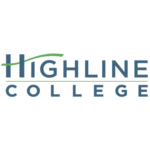

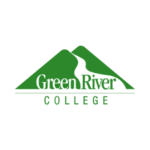


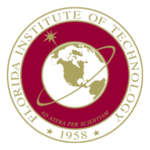
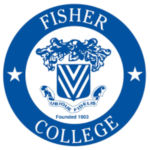
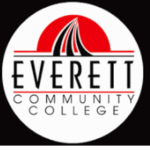


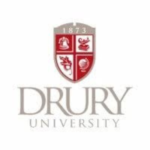
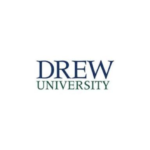


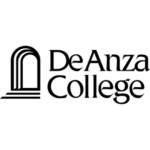

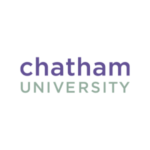
Student visa guideline
F-1 Visa is a non-immigrant visa issued to international students to study at accredited academic institutions certified by the Student and Exchange Visitor Program (SEVP) in the United States. This visa is specifically for full-time students enrolled in programs leading to a degree, diploma, or certificate at a U.S. college or university. Students can remain in the US for up to 60 days beyond the time it takes to complete their academic program unless they have applied and been approved to stay and work for some time under the OPT program.
Optional Practical Training (OPT) will permit you to work for up to 12 months in the US in a field related to your study. For STEM graduates, they can request for 2 more years of work in a related field.
F-1 VISA PROCESS:
- Students must be accepted into a course of study at a school approved by the Student and Exchange Visitor Program. SEVP uses Sevis to track and monitor students.
- Receive Form I-20 from the SEVP-approved school, it confirms the acceptance in school and is important for the visa process.
- Pay the I-901 fee (Servis fee) of $350. Keep the receipt, as you’ll need it for your visa interview.
- Fill out the DS-160 Form on the Consular Electronics Application Centre website.
- Schedule a visa interview at a U.S. embassy or consulate is mandatory.
- Prepare for the interview by gathering the required documents, including:
- A valid passport.
- Form I-20.
- DS-160 confirmation page.
- SEVIS fee payment receipt – $350.
- Visa application fee receipt – $185.
- Financial evidence (to prove you can support yourself).
- Academic records (transcripts, diplomas).
- Any additional documents are specific to your situation?
- Attend a visa interview, and discuss your study plans, financial support, and ties to your home country.
FAQ (Frequently Asked Question)
Academic:
For undergraduate programs, students must have completed 12th grade with good marks. For master’s programs, a bachelor’s degree with a strong academic background is required.
English Proficiency Tests:
Accepted tests include IELTS, TOEFL, and Duolingo.
Standardized Tests:
SAT or ACT scores are required for undergraduate admissions, while GRE or GMAT scores are accepted for graduate programs.
Tuition fees vary by university or college:
Undergraduate: $8,000 – $30,000 per year
Postgraduate: $15,000 – $35,000 per year
As an Indian student studying in the USA on an F-1 visa, you are allowed to work up to 20 hours per week during the academic term. During holidays and vacation periods, you can work full-time, which means up to 40 hours per week.
Students can earn between USD 10 to USD 22 per hour by working part-time in USA.
Dependents are allowed to accompany students in the US. They must meet eligibility requirements and obtain their own student visa if they wish to study.
About
Yarab Global Education & Migration Consultancy India Pvt. Ltd is a registered Consultancy based in India.
Find us on:
Study Destination
Test Prep
- IELTS
- PTE
- TOEFL
Branch Offices
Delhi
- +91-9319361977
- admissions@yarabglobal.in
Kerala
- +91-9319361977
- kerala.info@yarabglobal.in
